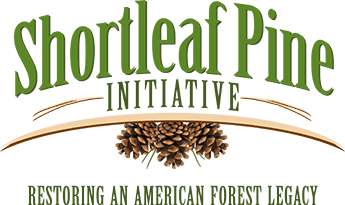|
Shortleaf research, newspaper articles, fact sheets, conference proceedings, literature reviews, and brochures.
Competition Control A 5-Year Assessment Of Shortleaf Pine And Hardwood Sprouts Relative To Three Methods Of Hardwood Control In The Arkansas Ozarks
A 5-Year Assessment Of Shortleaf Pine And Hardwood Sprouts Relative To Three Methods Of Hardwood Control In The Arkansas Ozarks
Cain, M. D. (2004). A 5-Year Assessment Of Shortleaf Pine And Hardwood Sprouts Relative To Three Methods Of Hardwood Control In The Arkansas Ozarks. Southern Research Station, General Technical Report SRS-74. Retrieved from https://www.srs.fs.usda.gov/pubs/gtr/gtr_srs074/gtr_srs074-cain001.pdf  A 9-year comparison of hardwood control treatments for enhancing natural regeneration and growth of loblolly-shortleaf pines in an uneven-aged stand
A 9-year comparison of hardwood control treatments for enhancing natural regeneration and growth of loblolly-shortleaf pines in an uneven-aged stand
Cain, M. D. (1998). A 9-year comparison of hardwood control treatments for enhancing natural regeneration and growth of loblolly-shortleaf pines in an uneven-agedstand. Proceedings, 51st annual meeting of the Southern Weed Science Society. Retrieved from https://www.srs.fs.usda.gov/pubs/ja/ja_cain023.pdf Cain, M. D. (1989). A simple competition assessment system associated with intensive competition control in natural loblolly-shortleaf pine seedling stands. Southern Journal of Applied Forestry, 13(1), 8-12. Retrieved from http://www.ingentaconnect.com/content/saf/sjaf/1989/00000013/00000001/art00005 Cain, M. D., & Shelton, M. G. (2002). Does prescribed burning have a place in regenerating uneven-aged loblolly-shortleaf pine stands? Southern Journal of Applied Forestry, 26(3), 117-123. Retrieved from http://www.ingentaconnect.com/content/saf/sjaf/2002/00000026/00000003/art00001 Shelton, M. G. (2004). Effects of Retaining a Hardwood Component During the Application of Uneven-Aged Silviculture in a Shortleaf Pine-Oak Stand: 6-Year Results. Southern Research Station, General Technical Report SRS-74. Retrieved from http://www.treesearch.fs.fed.us/pubs/6524 Lynch, T. B., Nkouka, J., Huebschmann, M. M., & Guldin, J. M. (2002). Estimating The Probability Of Achieving Shortleaf Pine Regeneration At Variable Specified Levels. Southern Research Station, General Technical Report SRS-48. Retrieved from https://www.fs.usda.gov/treesearch/pubs/3133  Evaluating subsoiling and herbaceous weed control on shortleaf pine planted in retired farm land
Evaluating subsoiling and herbaceous weed control on shortleaf pine planted in retired farm land
Kushla, J. D. (2010). Evaluating subsoiling and herbaceous weed control on shortleaf pine planted in retired farm land. Proceedings of the 14th biennial southern silvicultural research conference. Southern Research Station, General Technical Report SRS-121. Retrieved from https://www.srs.fs.fed.us/pubs/gtr/gtr_srs121/gtr_srs121_147.pdf Yeiser, J. L., & Barnett, J. P. (1991). Growth and physiological response of four shortleaf pine families to herbicidal control of herbaceous competition. Southern Journal of Applied Forestry, 15(4), 199-204. Retrieved from http://www.ingentaconnect.com/content/saf/sjaf/1991/00000015/00000004/art00008  Hardwood Control Treatments to Enhance Natural Regeneration and Growth of Loblolly-Shortleaf Pines in an Uneven-Aged Stand: 12-Year Results
Hardwood Control Treatments to Enhance Natural Regeneration and Growth of Loblolly-Shortleaf Pines in an Uneven-Aged Stand: 12-Year Results
Cain, M. D. (1999a). Hardwood Control Treatments to Enhance Natural Regeneration and Growth of Loblolly-Shortleaf Pines in an Uneven-Aged Stand: 12-Year Results. USDA Southern Silvicultural Research Conference. Retrieved from https://www.srs.fs.usda.gov/pubs/ja/ja_cain013.pdf  Impact of tip moth injury on growth and yield of 16-year-old loblolly and shortleaf pine
Impact of tip moth injury on growth and yield of 16-year-old loblolly and shortleaf pine
Williston, H. L., & Barras, S. J. (1976). Impact of tip moth injury on growth and yield of 16-year-old loblolly and shortleaf pine. Southern Forest Experiment Station, Research Note SO-221. Retrieved from https://www.srs.fs.usda.gov/pubs/rn/rn_so221.pdf |

